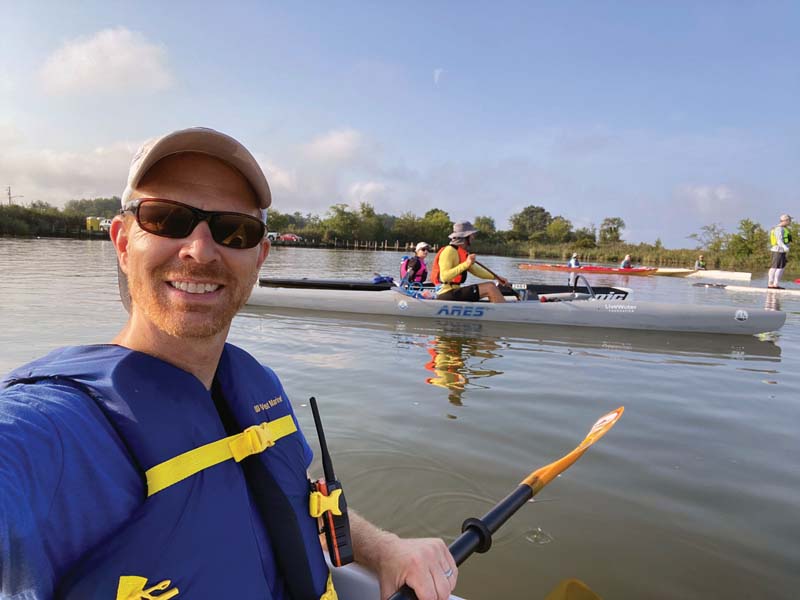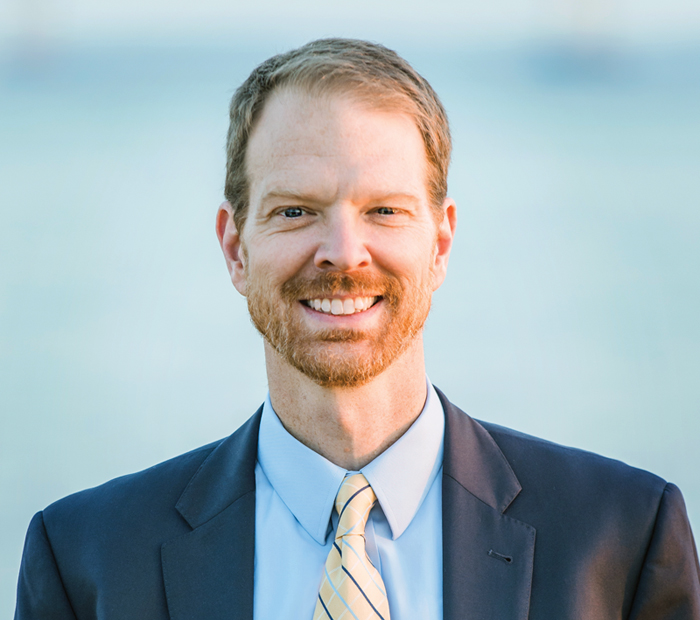In his role as president and CEO of the Chesapeake Conservancy, Joel Dunn works tirelessly to promote and champion efforts that conserve the watershed's natural land areas, restore the health of the Bay, and increase public access to local waterways. Here Dunn shares in his own words a bit about his work, how he became interested in outdoor conservation, and why he loves living and working near the Bay.

Who introduced you to the wonders of the outdoors?
I thank my mother for my lifelong wonder of the outdoors. While raising me in Sudbury, MA, she allowed me to explore and spend a ton of time outside, and to reward her, I brought her home jars of bugs and salamanders. My house was about 10 minutes away from Walden Pond, and I spent most of my childhood exploring the woods. I loved nature, fishing, camping, and hiking.
Meanwhile, my hometown was transforming before my eyes into McMansions, and they were paving over the old farms, vernal pools, and forests that were my childhood playground. This was the spark that led to my path as a future conservationist. I knew that one day I would fight for the wild things and access to nature.
Discovering the magic of the Chesapeake Bay
During graduate school at Duke University, I had two internships in Washington, DC, and I spent a lot of time exploring the region’s rivers, wildlife, and cultures. I loved it here and wanted to be where I could have the most impact, so I moved here after graduate school.
One of my mentors, Patrick Noonan, the former president of the Nature Conservancy who founded The Conservation Fund, hired me to help establish the Captain John Smith Chesapeake National Historic Water Trail (Chesapeake Trail), the nation’s first water-based national historic trail, which traverses Smith’s routes up the Chesapeake’s tributaries. That job brought me around the 12,000 miles of Chesapeake shoreline, where I met thousands of people who cared about the Bay.
Best part of life on the Chesapeake?
As a father of two young children, nothing is better than sharing the beauty of nature and the Chesapeake with them and igniting their sense of wonder and imagination when we see an osprey catch a fish, a dolphin leap from the Bay, or a monarch butterfly land on the milkweed that we planted. Our family enjoys kayaking when we can, and we’re looking forward to teaching our young daughters how to kayak in the years to come.

In your role as president and CEO of the Chesapeake Conservancy, what is most rewarding?
I am so proud of our team and the work we do together and for all the support from our community. The most rewarding part about it for me is conserving land and creating new places for people to access and enjoy the Chesapeake. It is estimated that only two percent of the Chesapeake shoreline is accessible to the public. We want everyone to enjoy the beauty of the Chesapeake. It is a matter of equity.
A few weeks ago, my family and I spent some time at one of Anne Arundel County’s publicly accessible natural areas, Sprigg’s Farm Park. It was wonderful. However, my wife turned to me and said, “It’s ironic that it’s so hard for our family to access the place that you work so hard to save.” I agree with her 100 percent. That’s why the work of the Chesapeake Conservancy is so important. Through partnerships, we are creating new parks, refuges, and trails across the Chesapeake Bay watershed—and developing awesome data to make the conservation movement smarter, faster, and more effective.
So far this year, we have celebrated two significant achievements conserving waterfront land that will one day be accessible to the public but could have been a housing development. Both places are steeped in history and will one day be sites that share the stories of the many people of the Chesapeake, past and present.
In Maryland, Elktonia Beach, the last remnant of an historic 180-acre property that welcomed Blacks to the waterfront for entertainment during a time of segregation, will soon be an Annapolis city waterfront park where the property’s incredible history will be shared with current and future generations.
In Virginia, thanks to the family of William Dodge Angle, the Chesapeake Conservancy purchased 465 acres on the Rappahannock River and donated the land to the Rappahannock Tribe with a conservation easement to the U.S. Fish and Wildlife Service. This re-united the Tribe with their ancestral homeland, from which they were forcibly removed more than 350 years ago. In the future, this special place will be publicly accessible.
In addition, we continue to advocate for a Chesapeake National Recreation Area (CNRA), which would create a new unit of the National Park System. U.S. Senator Van Hollen’s draft bill will soon be shared for public comment.
How can PropTalk and SpinSheet readers help?
I love this question. First, be mindful that you can make a difference. I tell my daughters that we can change the world one starfish at a time, referring to one of my favorite stories by Loren Eisely, “The Star Thrower,” in which a boy gently throws starfish from the beach back into the ocean. When a man asks what he is doing, the youth explains that if he doesn’t throw them back, they’ll die. The man says, “Don’t you realize there are miles and miles of beach and hundreds of starfish? You can’t possibly make a difference.” The boy listens politely, picks up another starfish, and throws it into the ocean saying, “I made a difference for that one.”
Secondly, use the power of your vote. Your elected officials from the local to the national level are making decisions every day that will affect the Chesapeake Bay and the health of your environment. We live in a democracy and that means your voice matters.
And lastly, support your local environmental nonprofits. Whether that’s by volunteering or through financial support, together we can change the world. Visit the Chesapeake Bay Program’s “Find A Group” page, to find an organization that interests you.
This article first appeared in the August 2022 edition of PropTalk Magazine.




